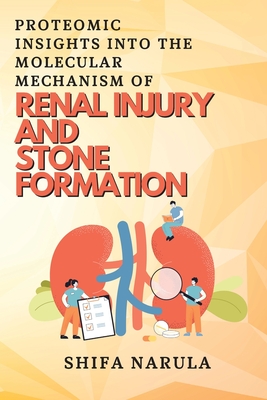You are here
Back to topProteomic Insights Into the Molecular Mechanism of Renal Injury and Stone Formation (Paperback)
$30.99
This item is not available this time
This item is not available this time
Description
Kidney stone formation, also known as nephrolithiasis, is the third most common kidney disorder, affecting 12-15% of the global population. With its expanding prevalence rate and highly recurrent nature, nephrolithiasis poses a major health burden to mankind. There are several risk factors involved in the pathogenesis of nephrolithiasis, including lifestyle, age, climate, gender, race, genetics, and metabolic factors, but their convergence with the disease is extremely complex. Its high rate of recurrence and multi-factorial etiology are the major roadblocks in the management of this disorder. Even after extensive advancements in medical therapy, a permanent cure for the recurrence of kidney stones is still not available. Although nephrolithiasis is a well-documented ailment and stones have been extensively studied for their composition, the impact of its molecular constituents on the intricate mechanism of lith formation is not clear. Various reports have revealed that urinary fluid contains several inorganic and organic molecules that act as regulators in deciding the fate of stones. Normally, the urinary conditions are highly saturated with respect to minerals, salts, and ions under physiological conditions, but this super-saturation is never high enough to result in lithogenesis. However, in a pathological state, the activity of promoters overshadows that of inhibitors, resulting in the formation of stones. Some urinary bio-regulatory molecules, especially proteins, while exhibiting their modulatory activity on calcium oxalate (CaOx) crystals, get incorporated in the CaOx aggregates, resulting in the formation of the organic matrix of kidney stones. Proteins, being the key regulators and principal components of a kidney stone's organic matrix, are considered to play a crucial role in lithogenesis. Several studies have identified different proteins from renal stones; however, only a few have been characterized. Moreover, the mechanism undertaken by these proteins to modulate stone formation still needs to be elucidated. As a result, the current study was designed to investigate the protein composition of human kidney stones as well as the intricate mechanism involved in kidney stone formation. Decoding the etiology of lithogenesis at the molecular level could aid in enhancing the therapeutic outcomes of this disease.
